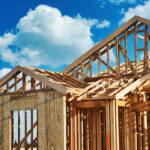In Q3, asking rents for newly built apartments increased 1.5% to a median of $1,802, the largest year-over-year increase in 18 months. This is in line with a recent Redfin report.
The rent increase followed two quarters in a row in which new apartment rents dropped by over 7%.
After plummeting to $1,714 in the second quarter, the lowest level since mid-2021, the median rent for newly built apartments rose above $1,800 in Q3 for the first time since late 2023.
There are various stories to be told by the regional breakdown. After the number of newly completed apartments increased 13% year over year in the second quarter to the highest level since the fourth quarter of 2022, asking rents for new flats actually decreased 3.6% year over year in the Northeast.
Despite a 34.1% increase in newly finished units, the West area experienced the largest increase in median rentals (4.4%). Following a 47% increase in new apartment completions, asking rentals in the Midwest increased by 3.3%. Rents increased slightly (1.1%) in the South, which witnessed nearly as many new apartment completions as the other three regions combined.
“We would usually predict that rents will stay flat, or even potentially fall, when there are so many new apartment buildings opening up. What’s interesting in the third quarter is that rents are rising by more than the national average in the West and Midwest, even after the number of new apartments spiked between 30-50%,” said Sheharyar Bokhari, Senior Economist at Redfin. “This is likely due to more new apartments being built in more expensive metros in each region, pushing the overall levels up.”
Just over half (52%) of newly built apartments finished in the second quarter were rented out within three months, according to a different Redfin research.
The percentage of newly constructed apartments that were rented out within three months of completion, or the absorption rate, was the second-lowest seasonally adjusted share since the middle of 2020. The rate was eight percentage points lower than it was a year ago and down little from 54% the previous quarter.
Just over half (52%) of newly built apartments finished in the second quarter were rented out within three months, according to a different Redfin research.
After huge swings during the epidemic, when demand skyrocketed in some parts of the nation, particularly the Sun Belt, the absorption rate over the last two quarters has returned to the 50–55% rate observed in the late 2010s.
The rise in new apartment development in locations where epidemic demand spiked between 2020 and 2022 has caused the absorption rate to decelerate. As a result, the second quarter saw the greatest number of new apartment completions in at least 12 years.
Another indication that supply is still exceeding demand is the third-quarter national rental vacancy rate for buildings with five or more units, which was 8%. This rate is the highest since the first quarter of 2021.
However, it’s important to note that the building of apartments is slowing down. This is demonstrated by Census statistics, which indicates that there were over 20% fewer new apartments under construction at the end of October than there were a year earlier. Additionally, there was a 20% decrease in the quantity of new apartment building licenses issued.
Compared to 58% a year ago, two-thirds (67%) of newly built apartments in the Northeast region that were finished in the second quarter were occupied within three months.
The absorption rate fell to 51%, a five percentage point decrease from the previous year, indicating that new flats filled up the slowest in the South. Due to the high levels of pandemic-driven migration to several Sun Belt metro areas, particularly in Florida and Texas, developers are rushing to satisfy demand, placing the South at the center of the recent construction boom. The fact that the South area finished almost as many new flats in the second quarter as the other three regions put together serves to highlight this.
The absorption rate decreased 14 percentage points to 58% in the West region, the largest decline from a year earlier.
To read the full repot, including more data, charts, and methodology, click here.






